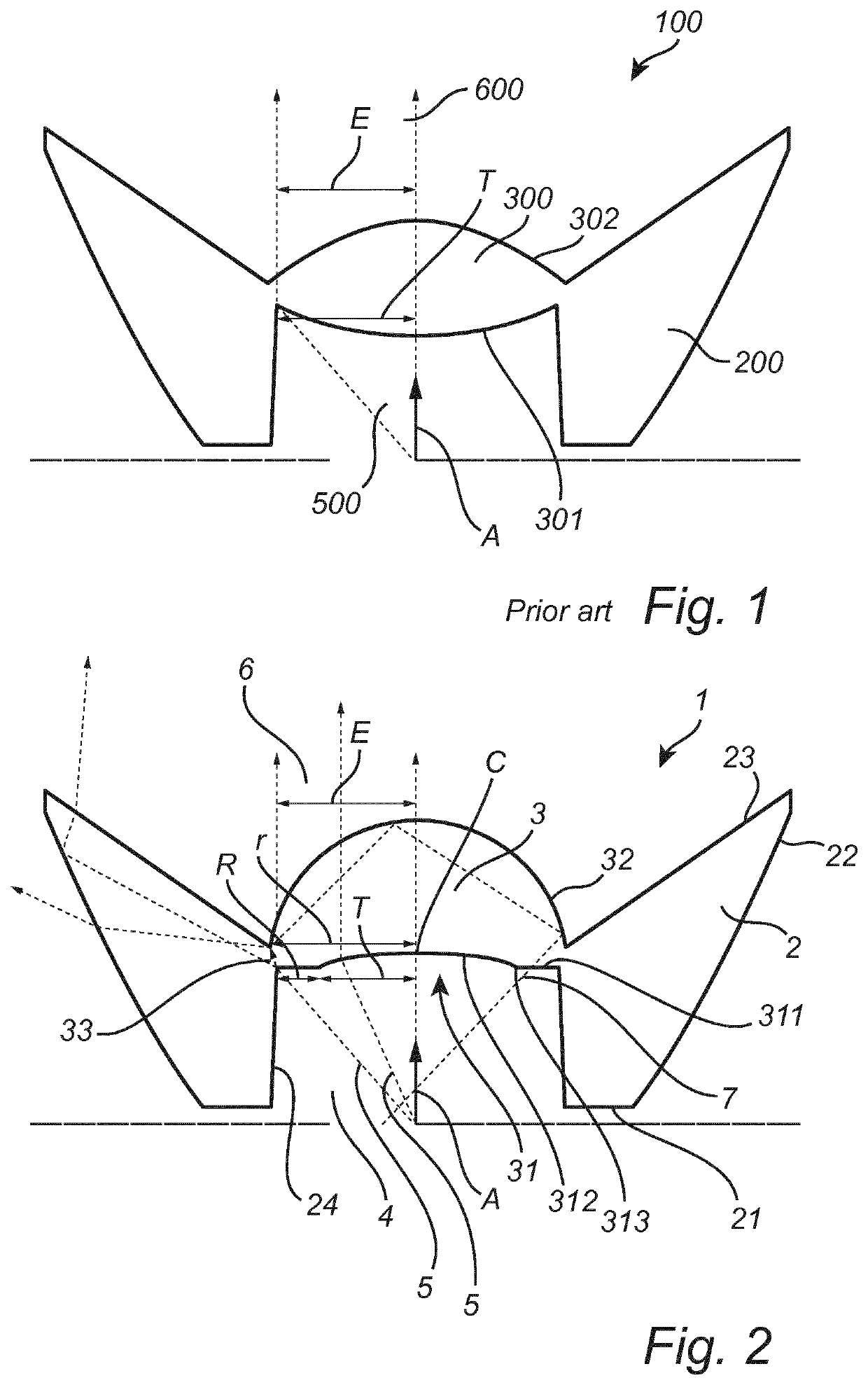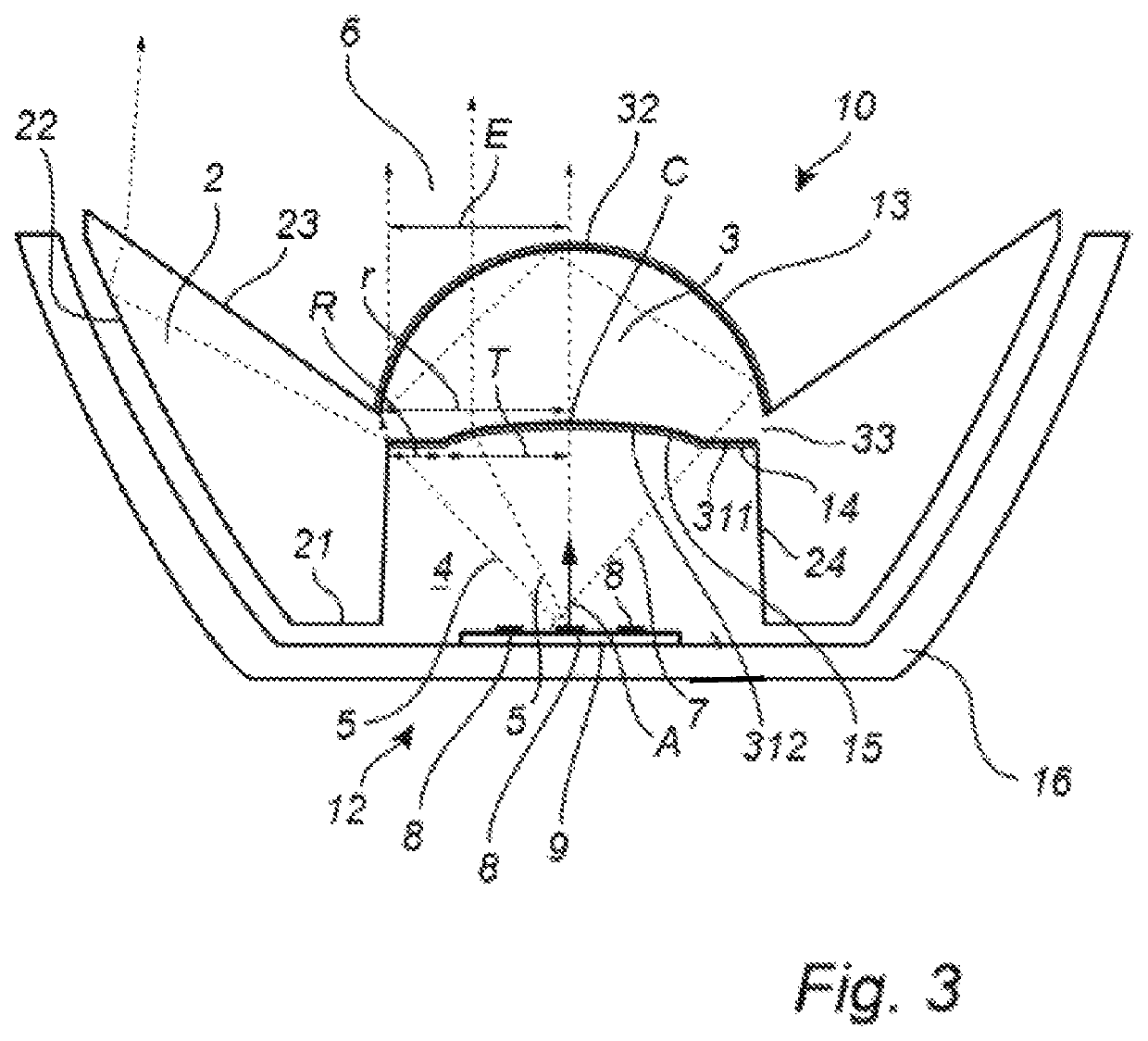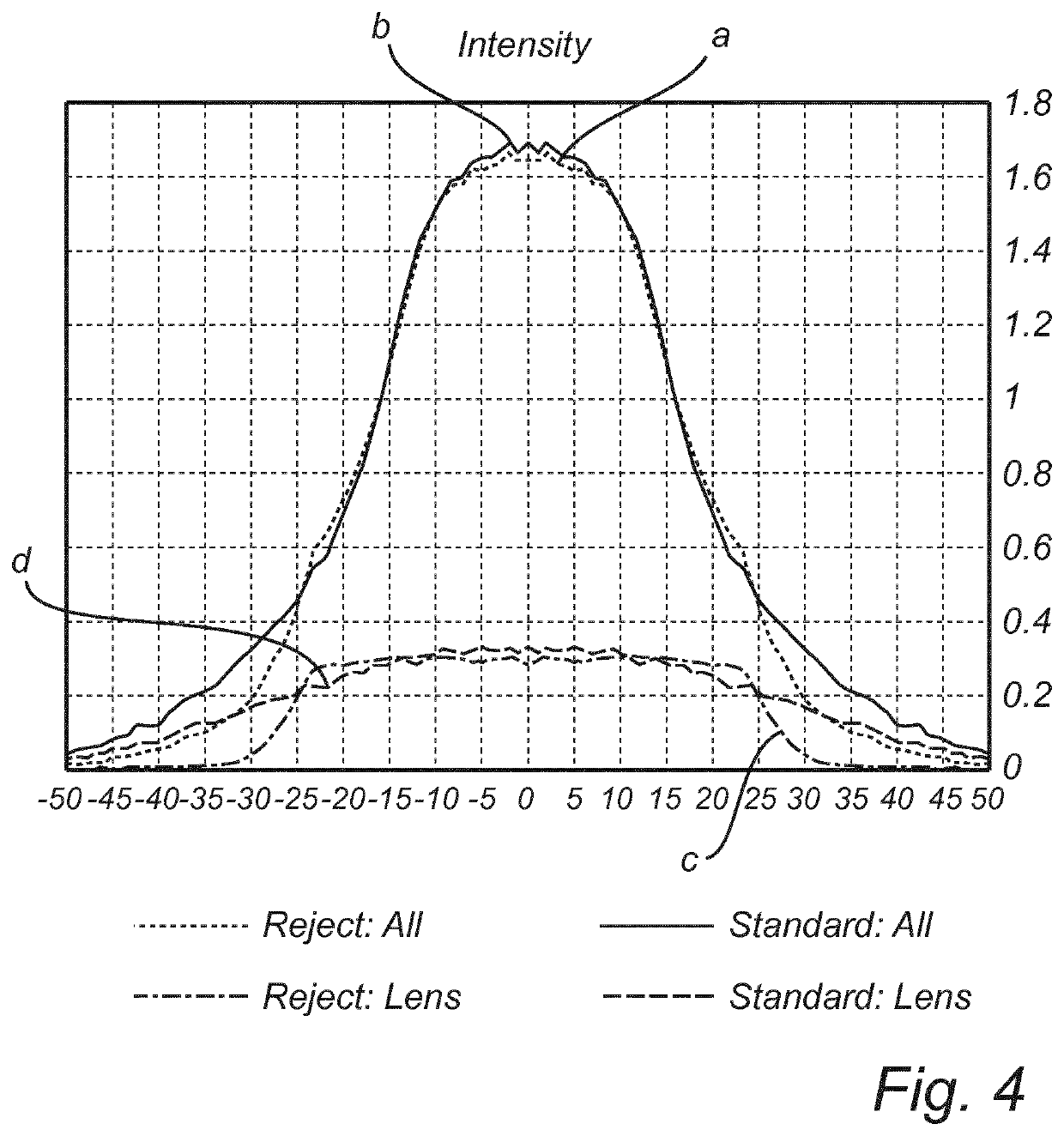Dielectric collimator with a rejecting center lens
a technology of center lens and dielectric collimator, which is applied in the direction of instruments, lighting and heating apparatus, lighting support devices, etc., can solve the problems of unwanted light, center lens, especially, and too much etendue in the center lens section, so as to reduce etendue, reduce or even completely remove the halo effect
- Summary
- Abstract
- Description
- Claims
- Application Information
AI Technical Summary
Benefits of technology
Problems solved by technology
Method used
Image
Examples
Embodiment Construction
[0050]The present invention will now be described more fully hereinafter with reference to the accompanying drawings, in which currently preferred embodiments of the invention are shown. This invention may, however, be embodied in many different forms and should not be construed as limited to the embodiments set forth herein; rather, these embodiments are provided for thoroughness and completeness, and fully convey the scope of the invention to the skilled person.
[0051]For the sake of reference, FIG. 1 shows a cross sectional side view of a prior art TIR collimator 100. The TIR collimator 100 comprises a center lens 300 and a TIR collimating outer section 200. The center lens 300 comprises a light input surface 301 and a light exit surface 302. The light exit surface 302 is convex curvature, which is typical for prior art types of TIR collimators. It is noted that spherical and aspheric light exit surfaces are possible and common, too. The light input surface 301 is also convex, and...
PUM
| Property | Measurement | Unit |
|---|---|---|
| angle | aaaaa | aaaaa |
| refractive index | aaaaa | aaaaa |
| draft angle | aaaaa | aaaaa |
Abstract
Description
Claims
Application Information
 Login to View More
Login to View More - R&D
- Intellectual Property
- Life Sciences
- Materials
- Tech Scout
- Unparalleled Data Quality
- Higher Quality Content
- 60% Fewer Hallucinations
Browse by: Latest US Patents, China's latest patents, Technical Efficacy Thesaurus, Application Domain, Technology Topic, Popular Technical Reports.
© 2025 PatSnap. All rights reserved.Legal|Privacy policy|Modern Slavery Act Transparency Statement|Sitemap|About US| Contact US: help@patsnap.com



